

Table of contents
- What distinguishes broccoli
- Good neighbors for a mixed culture
- B to M
- P to T
- Mixed culture with herbs
A mixed culture with other types of vegetables can promote the development of broccoli. However, this presupposes that one chooses species that do not compete with each other, but rather favor each other.
What distinguishes broccoli
- Grows similar to cauliflower
- Head consists of small deep green or blue-green florets
- Prefers sunny locations
- As a heavy feeder, it needs deep, nutrient-rich soil
- With a high lime content
- Harvest as soon as middle flower is well formed
Good neighbors for a mixed culture
Here are the suitable vegetable plant neighbors for broccoli:
B to M
beans(Phaseolus vulgaris)

- French and pole beans
- Wind-protected, sunny and warm locations
- Also thrive in semi-shade
- Soil deep, calcareous and not encrusted
- Ready to harvest two to three months after sowing
- Early varieties already at the beginning of summer
Peas(Pisum sativum)

- Annual herbaceous growth, 25-200 cm high
- Flowering time in May
- Open sunny locations
- Fine, humus-rich soil
- Too heavy and wet soils unsuitable
- Harvest time depends on variety
cucumbers(Cucumis sativus)
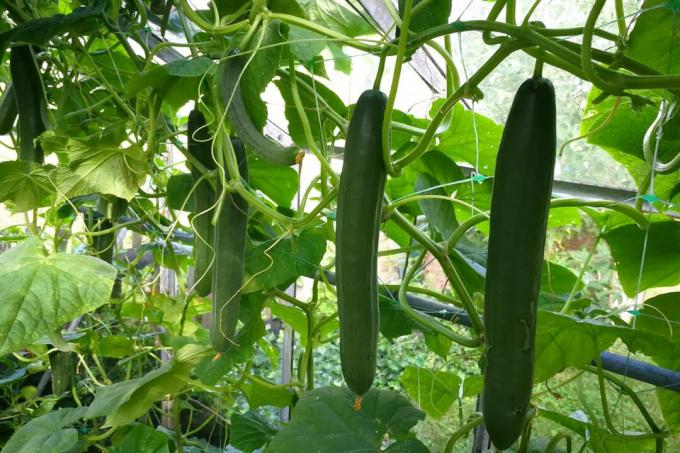
- Annual growth, creeping or climbing on the ground
- Depending on the variety, up to 400 cm long or high
- Warm, humid, wind-protected location in full sun
- Large temperature fluctuations and cold are problematic
- Soil humus and loose
- Start of harvest around July
potatoes(Solanum tuberosum)
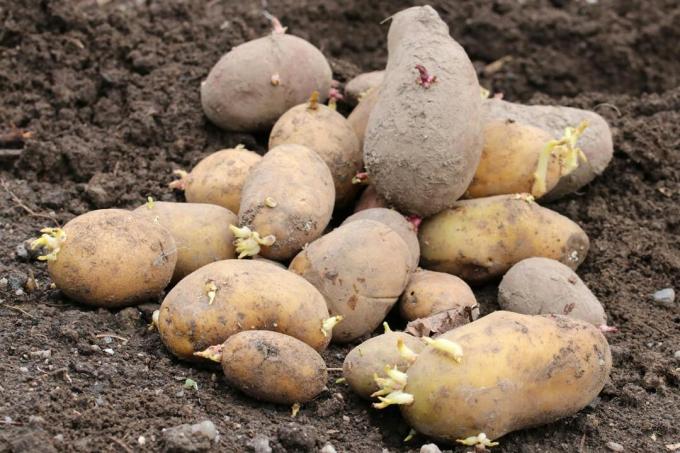
- Perennial, upright or climbing
- Growth heights of over 100 cm
- Potatoes like it warm, sunny and light
- Soil light to medium heavy, permeable to water
- Improve heavy clay soils with sand
- Harvest as soon as herbs are wilted
- New potatoes also earlier
lettuce(Lactuca sativa)

- Very sensitive lettuce variety
- Annual to biennial plants
- High season from April to October
- Low season March and November
- Needs a sunny spot
- Soil pH not below 5.5
- Depending on the weather, 60-120 days until harvest
chard(Beta vulgaris)

- Biennial crop
- Closely related to beetroot
- Leaf and stem chard
- Sunny locations and nutrient-rich soil
- Harvest time May to October
- Harvest fresh as needed
P to T
paprika(capsicum)

- Can grow up to 120 cm high
- Loves sheltered, warm and sunny locations
- Deep, humic, nutrient-rich substrates
- Soil should be easily heatable
- Ripe when color has changed to red, orange or yellow
- Can also be harvested green (unripe).
- Green specimens less sweet and aromatic
Tip:
Peppers always need plenty of water, especially when they start fruiting.
pick lettuce(Lactuca sativa var. crispa)
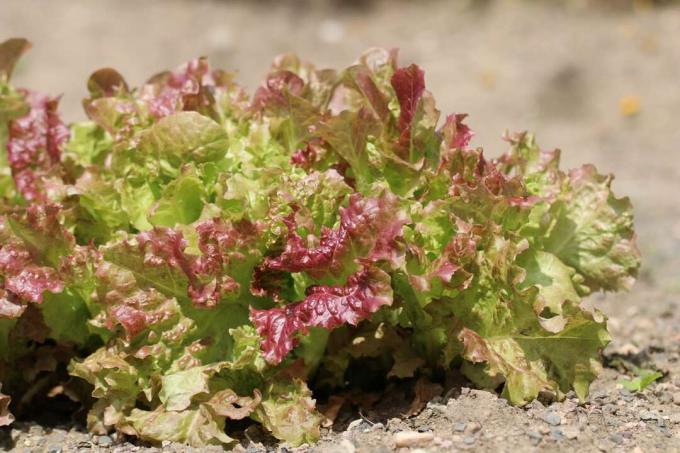
- Does not form a closed head
- Rosettes of leaves 20-30 cm high
- Sunny to partially shaded locations
- Loose soil rich in humus and nutrients
- Culture duration between four and six weeks
Tip:
Lettuce should be planted in the same location after two to four years at the earliest. A corresponding break in cultivation must also be observed if lettuce or other daisies have previously been cultivated there.
leek(Allium porrum)
- Biennial herb
- Related to onion and shallot
- Belongs to the heavy feeders
- Summer, autumn and winter leeks
- Prefers sunny locations
- Slightly moist, nutrient-rich soil
- Harvest when stems are at least 3 inches thick
Tip:
The goal with leeks is to have as much white as possible on the shank, which can be achieved by regularly piling up.
radish(Raphanus)
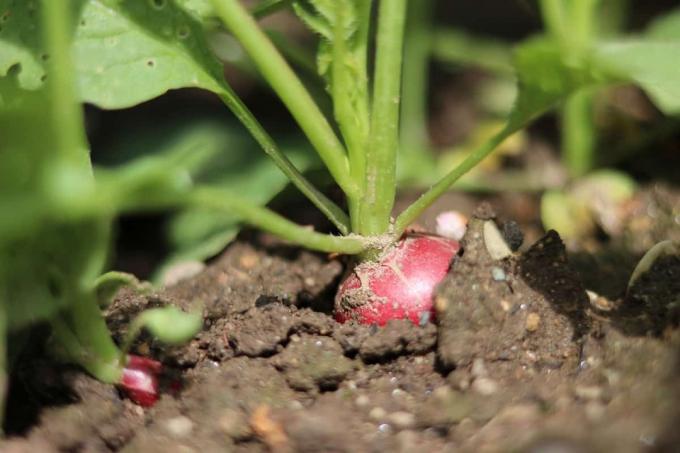
- Annual to biennial herbaceous plants
- Differences in size, shape and color
- Sunny place for most varieties
- Some do better in partial shade
- Subsoil loose, deep, rich in nutrients
- Harvest spring and summer radishes after about eight weeks
- Late varieties take four weeks longer
Tip:
It is better to harvest radishes a little earlier than too late. Otherwise it can quickly become woody.
Beetroot(Beta vulgaris)

- Cultivated form of the common turnip
- Related to sugar beet and Swiss chard
- Biennial herb
- Differences in shape and color depending on the variety
- Sunny locations
- Deep, humic and nutrient-rich soil
- From sowing to harvest 120-150 days
celery(apium)

- Root, cut and stalk celery
- Annual or biennial herbaceous plants
- Sticky celery milder than celeriac
- Leaves from cut celery are reminiscent of parsley
- Optimum growth in a sunny location
- Soil with a loose structure
- Celeriac to be harvested at least the size of a tennis ball
spinach(Spinacia oleracea)

- Annual herbaceous growth
- Belongs to so-called long-day plants
- Growth heights of 50-100 cm
- Full sun and semi-shady locations
- Soil rich in humus and permeable
- Should be kept moist
- Harvest 10-12 weeks after sowing
tomatoes(Solanum lycopersicum)

- Annual, biennial or perennial
- Can grow 250 cm high
- Supports recommended for better support
- Protect tomatoes from rain and storms
- React sensitively to waterlogging
- Shade in midsummer
- Soil well drained, rich in humus, nutritious
Tip:
Planting tomato plants in soil up to the bottom leaf encourages the growth of additional roots.
Mixed culture with herbs
basil(Ocimum basilicum)

- Mostly annual upright plants
- Differences in colour, size, aroma and growth
- Sizes from 20-60 cm
- Sunny locations are ideal
- Soil rich in nutrients and sufficiently moist
Tip:
The aroma of basil is most intense just before flowering.
dill(Anethum graveolens)
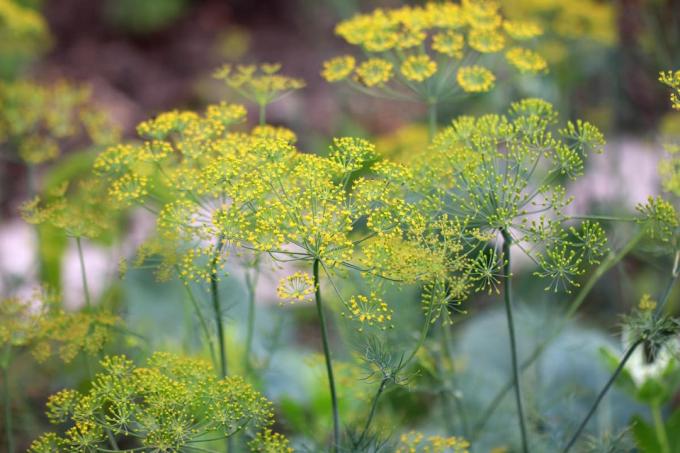
- Also known as cucumber herb
- Annual herbaceous plant
- Growth heights of 30-50 cm
- Sunny place with not too firm ground
- Well-drained loamy soil with sand or gravel
- Harvest the young shoot tips from a growth height of 15 cm
peppermint(Mentha piperita)

- Perennial to herbaceous growth, 30-90 cm high
- Subterranean and aboveground foothills
- Leaves contain peppermint essential oil
- Partially shaded locations
- Soil fresh, slightly moist, rich in humus and nutrients, likes lime
- Harvest from spring to autumn
rosemary(Rosmarinus officinalis)

- One of the Mediterranean herbs
- Evergreen, bushy, branched shrub
- Growth height 50-200 cm
- Intense aromatic scent
- Harvest possible all year round
 Home editorial office
Home editorial office
Learn more about creating a vegetable garden
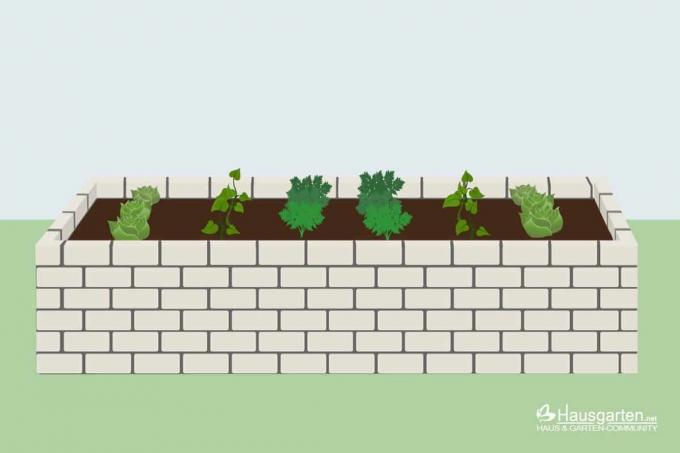
Build your own raised bed out of stones: this is how it works
Building a raised bed out of stones is more complex than variants made out of wood or aerated concrete. On the other hand, they are very durable, decorative, offer decisive advantages and can even increase yields. We explain how it works here.

Paths in the vegetable garden: 7 ideas for beautiful and practical bed paths
As a rule, there is no way in the vegetable garden without paths. Only through them can all beds be easily reached. Of course you have to think about how to create and design them. Here are some tips and ideas.
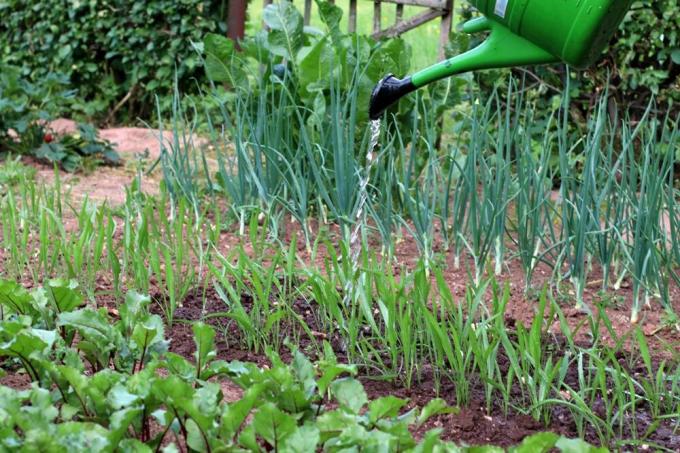
Creating a vegetable garden for beginners – instructions incl. plan
Quite a few people today dream of harvesting their own vegetables and being self-sufficient. No wonder: you know where it comes from and what's in it. You are also a bit more independent. Of course you need a garden for that. What is important when creating a vegetable garden is here.

Planning a vegetable garden - my first small self-sufficient garden
The vegetable garden is an important first step on the way to independent self-sufficiency. In order for your self-sufficient life to get off to a good start, it depends on the right planning, from A, for cultivation area, to Z, for fence. This step-by-step guide explains how to make your first small self-sufficient garden perfect.

Choose the right film for the raised bed
Raised beds are not only a big trend, they can make growing fresh vegetables and aromatic herbs a lot easier. With a flexible choice of location, the design options are almost inexhaustible. Raised beds can be made of different materials that suffer to varying degrees from soil moisture. This requires good protection.
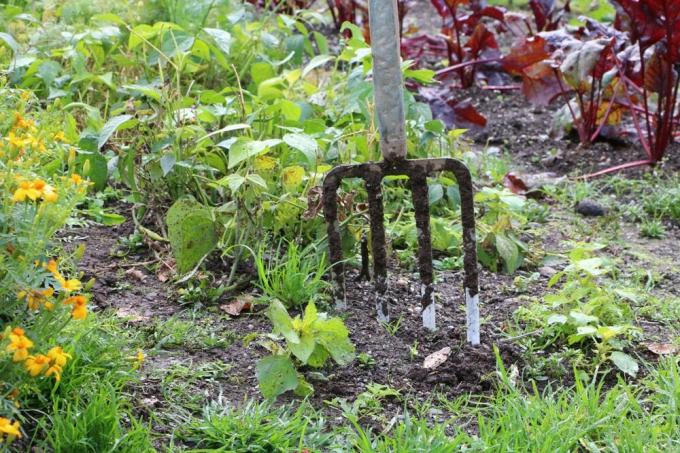
Creating an organic garden - tips on plants, varieties and crop rotation
Pesticide-free and sustainable: There are many reasons for cultivating an organic garden. The near-natural landscapes also offer a protected retreat for endangered plant species. Creating an organic garden is easy to do. With the right preparation, it is possible to enjoy a bountiful bloom and harvest in the summer.



